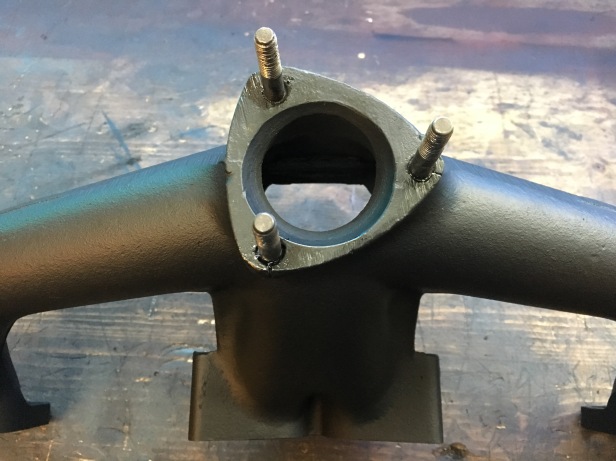The inlet and exhaust manifold needed a good scrub up and in the case of the cast iron exhaust manifold, a coat of high temperature paint.
The inlet manifold is the alloy part. The carburettor is mounted on top of this and the fuel and air mixture drawn into the head.
The rusty looking part is the exhaust manifold, which funnels the exhaust gas out and down to the exhaust.














